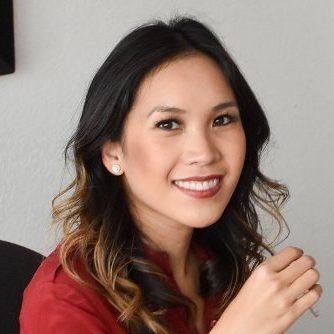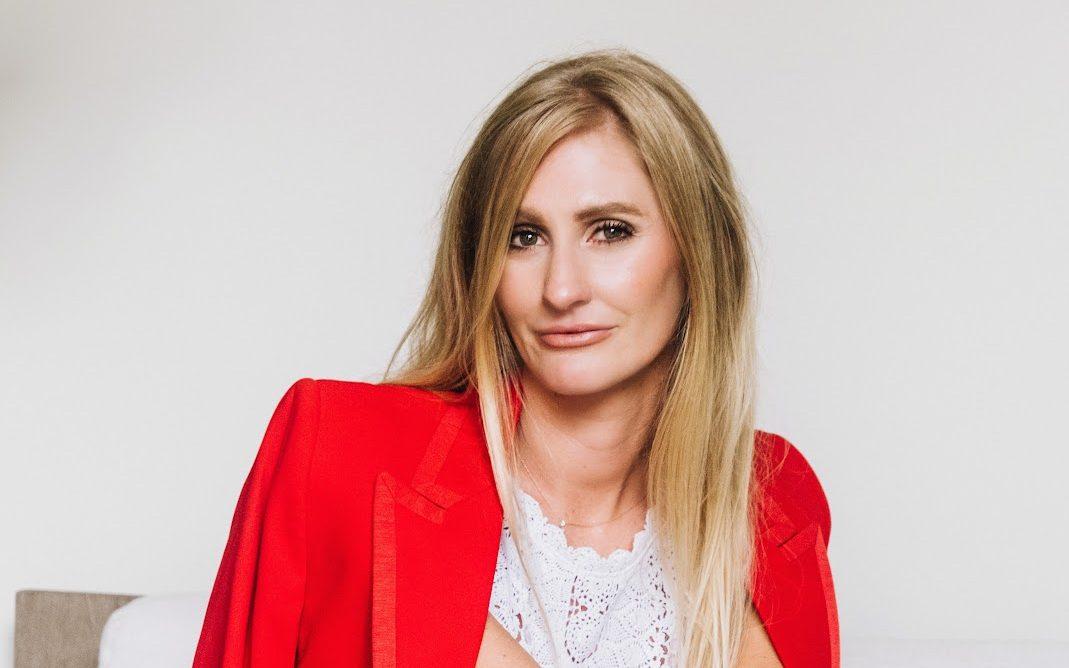The Crunchbase “Female Leader Series” is comprised of stories, Q&As and thought-leadership pieces from glass-ceiling-smashers who overcame the odds and are now leading successful companies.
There are countless playbooks and best practices for generating sales. But in a constantly changing market—not to mention one in which prospective customers have tight budgets, overloaded schedules and plenty of competitors to choose from—sometimes the best answer is to throw the tried-and-true out the door.
Even for companies with a solid customer acquisition strategy in place, experimenting with new methods has the potential to reach different types of customers, boost brand awareness or spotlight new best practices you may never have considered.
To learn more, we tapped into the experiences of 16 woman business leaders from the Dreamers & Doers collective to learn more about the nontraditional ways they’ve acquired customers. If you’re looking to freshen up your strategies, the following methods may yield phenomenal results.
Katharine Spooner
Growth investor at Sprints Capital, a $1 billion AUM tech-focused growth equity fund headquartered in London.


Her strategy: Offer targeted promotions. Increasingly, early-stage consumer companies use promotional software to attract new customers. Offering 10% off to new customers is hardly revolutionary, but now many companies target prospective customers with tailored promotions, ranging from geographic targeted promotions to loyalty referral schemes. For example, a prospective customer who has spent a certain amount of time browsing a product or service online will receive a discount specifically on that product. This discount will often be time-marked—that is, the customer has a short time frame to make that purchase, which motivates them to buy.
The results: Implementing targeted promotions has become very popular, especially as people move away from expensive traditional online channels like Facebook and Google. Using software that streamlines promotions and allows for complex, omnichannel solutions is often the most efficient tactic for companies.
Hanh Nguyen
Co-founder and CEO at Y’OUR Skin, a data-driven personalized skincare brand that just works for each individual and grows along with their life.


Her strategy: Give your brand a soundtrack. We created our own music which is meant to be engaging to listen to, easy to remember and sing along with, and is designed to represent our brand. We know major brands are catching on to the idea of filing short-form videos, but not so many brands think of creating their own music to include in their videos. We did. We get our customers and influencers to use our music in their videos and spread it all over TikTok and Instagram.
The results: This tactic has resulted in hundreds of videos made with our music and spread our brand organically.
Jessie Young
Global lead, New Verticals at Uber Technologies, changing the way the world moves for the better.


Her strategy: Respond to consumer needs. If you can acquire a customer in a moment of need and deliver a magical experience, they are typically loyal for life. We often use customized customer relationship management to message specific products to customers in these times of need, with a jovial tone of voice and reliable supply. For example, we were able to ensure the supply of eggs at our grocery brand in North Asia at a time of a market supply chain shortage.
The results: At these moments of need, when you are able to bridge supply and raise that to customers, you earn trust. We engage and retain these customers at up to 1.6x rates.
Gabrielle Thomas
Founder and CEO of GT Consulting, a private collective for health and wellness business owners.


Her strategy: Empathize with customers’ pain points. I double down on my natural tendency as an introvert to listen and focus on the details. It helps me easily and quickly identify a client’s need and find ways to strengthen that need with a relevant product or service. I equally spend time working on being a little more extroverted, which helps me to extend my reach.
The results: This strategy increases our sales revenue and doubles down on our deliverability, which is where we outshine the competition.
Ashli Weiss
Attorney at Weiss Law, a technology law firm for startups and businesses.


Her strategy: Meet clients as a panel moderator. I get in front of clients by moderating panels, rather than being a speaker. As a moderator, I can tap a star-studded speaker lineup and create a topic that I know my prospective clients will attend. By uplifting the speakers with panel exposure at the conference, I also get that client the same exposure.
The results: Moderating panels strengthens my visibility. Each panel speaker shares the event to their social networks, which features me as the moderator, resulting in prospective clients outside of my network contacting me for legal services.
Shanila Sattar
Founder of AlwaysPlay Studios, supporting aspiring healers to close the wellness gap through breathwork facilitator, sound healing certifications and community-based healing.


Her strategy: Create a space in your community. I started by handing out free breathwork classes in farmers’ markets in Los Angeles, which has now evolved into creating a free and accessible directory of on-demand breathwork classes that I or my certified breathwork facilitators lead. This space has helped over 20,000 folks breathe in times of uncertainty during quarantine, aid in deep healing and ignite hundreds of aspiring wellness practitioners to come train with me in breathwork.
The results: Creating a community-based space has been a game changer in terms of the nurturing, comfort and safety people feel in these healing spaces. Referrals have increased by 80% and the number of facilitators seeking certifications has increased as well.
Lexi Aiassa
Founder and CEO of The Confidence Co, creating vegan supplements made for optimal digestion.


Her strategy: Build an online community. One in four people have gut issues, but no one likes to talk about them. We created a community to encourage our users to have open dialogue and conversation about the “taboo” that is digestive health. We use a platform called Geneva to create this community and encourage these conversations.
The results: Our users are so happy to have found a sense of community. Digestive issues are a serious problem, and it can be extremely isolating. This community-driven tactic has gained us customers who love and share our company ethos and products with everyone they know.
Danielle Thompson
Founder of Design Match, connecting passionate founders with ambitious creative talent.


Her strategy: Send out personalized videos. Sending personalized videos to founders asking what they need help with. In this hyper-automated world, everyone is just looking for a sense of connection. I have never spoken to most of my clients—they’ve only seen me on video!
The results: I remember in seven days closing $20,000 in deals with this strategy on Angelist for my old company. With Design Match, this strategy has brought in over $70,000 pre-launch from only four customers.
Kelsey Bishop
Founder and CEO of Candor, a professional network that’s focused on authentic profiles of how people work, not just what they’ve worked on.


Her strategy: Advertise in newsletters. I’ve seen substantial growth through newsletters. There are so many newsletters in our industry that focus on life in startups, the future of work, and jobs in startups. We have a natural pitch for people subscribing to these types of newsletters, so we’ve been advertising in them. Since most of these newsletters are small, it’s not terribly expensive and they have high conversion.
The results: Newsletter ads have been helping us grow 25% week over week.
Marissa Pick
Founder of Marissa Pick Consulting LLC, providing strategic consulting focused on digital transformation, content marketing, social media strategy, personal branding and more.


Her strategy: Focus on relationships. Network without an agenda. Too often, people focus on sales within the first line of an email. We’ve all been there—we quickly delete and ignore LinkedIn messages because they’re too pushy or too salesy. I’ve found building clients through building relationships and networking has been the most beneficial. I try to add value and have a clear approach to solve a business problem.
The results: I’ve been able to grow a business and clients by helping them set up campaigns and provide strategies with clear and measurable results.
Andrea Guendelman
CEO of Speak, using cohort-based learning to attract and convert talent from diverse backgrounds.


Her strategy: Start with a pilot. Invite potential customers to be pilot partners for a very reduced price and offer them the opportunity to participate in the construction of the product.
The results: For an early-stage company without product-market fit yet, that was helpful for us and also progressive for them. What started as a pilot with Amazon in 2021 ended up with more than 100 hires and a full-blown program to increase diversity at Amazon Web Services.
Dr. Melissa Barker
Founder and CEO of The Phoenix Project, a caring digital community that supports mental health and wellness—anywhere, anytime.


Her strategy: Always be pitching. I once landed a contract after sitting next to the CEO on an airplane. We talked openly and candidly about my company and the work we were setting out to do in the world. It attracted a dream client and customer base.
The results: In remaining open and passionate about what I do and why, I have attracted early partners and clients that align with our mission and values. Never be afraid to be seen. The world needs leaders building solutions that can help.
Yewande Faloyin
Founder and CEO of OTITỌ Executive Leadership Coaching, showing high achievers and entrepreneurial leaders how to confidently accelerate into more impactful leadership positions.


Her strategy: Treat your clients as partners. At OTITỌ, our sales approach is based on partnership. My team and I approach every conversation with a prospective client like we are already partners. So it isn’t my responsibility to sell them my services. Instead, it is our joint responsibility to discover—together—the benefit of our services for the prospect and agree to our fit to work together.
The results: Starting with our bottom line, this approach has resulted in increased sales and profits, more clients and securing our largest, long-term business client. My team and I genuinely enjoy the sales process, and clients who come onboard are significantly more bought into our services and take greater ownership of their success. This brings them better results and gives us significantly more referrals from prospects.
Ashley Reed
Certified Professional Coach at Ashley Reed Coaching LLC, helping high-performing executives and entrepreneurs navigate both business and life.


Her strategy: Use visualization. It might sound strange at first, but visualization—the act of imagining what you want to achieve in the future—can be a really powerful selling tool. It allows you to build a connection between your product and your target customer by immersing them in the brand story and experience, all while sitting on a call together. We used powerful tools like this when I was vice president of marketing solutions and event sponsorships at iHeartMedia and had great success.
The results: For us, it was all about immersing potential clients in these compelling stories around our event experiences. The success came in the form of selling sponsorships to our big events like iHeartRadio Jingle Ball, iHeartRadio Music Festival, and our awards show. If you can help someone feel and experience a product through storytelling and visualization, and then you have the data to support the value proposition, the selling happens on its own.
Dina Kaplan
Founder and CEO of The Path, teaching meditation for the modern mind.


Her strategy: Network everywhere you can. I talk to everyone around me, on buses, planes, subways and the supermarket. I have met people who join our meditation retreats, teacher training programs,and, of course, I have met many friends. You might think “customer” is some amorphous being, but there are potential clients all around us, all of the time.
The results: We sell out every meditation teacher training program we host, and part of this is me simply knowing a lot of people. This comes from being friendly and outgoing in my daily life and often saying yes to social invitations.
Diane Darling
Speaker and author at Skills4Today, working with individuals and corporations alike teaching both online and offline communication skills.


Her strategy: Step outside your comfort zone. I took acting and stand-up comedy classes to overcome my fear of public speaking. Stand-up comedy taught me rehearsed spontaneity—the importance of being exceptionally prepared, and to stop thinking that I sound great off the top of my head.
The results: Stepping outside my comfort zone with stand-up comedy has given me greater confidence, less overthinking, reduced procrastination and increased profit for my business.
All individuals featured in this article are members of Dreamers & Doers, an award-winning community and diverse ecosystem amplifying extraordinary entrepreneurial women through PR opportunities, authentic connection and high-impact resources. Learn more about Dreamers & Doers and subscribe to its monthly The Digest for top entrepreneurial and career resources.





